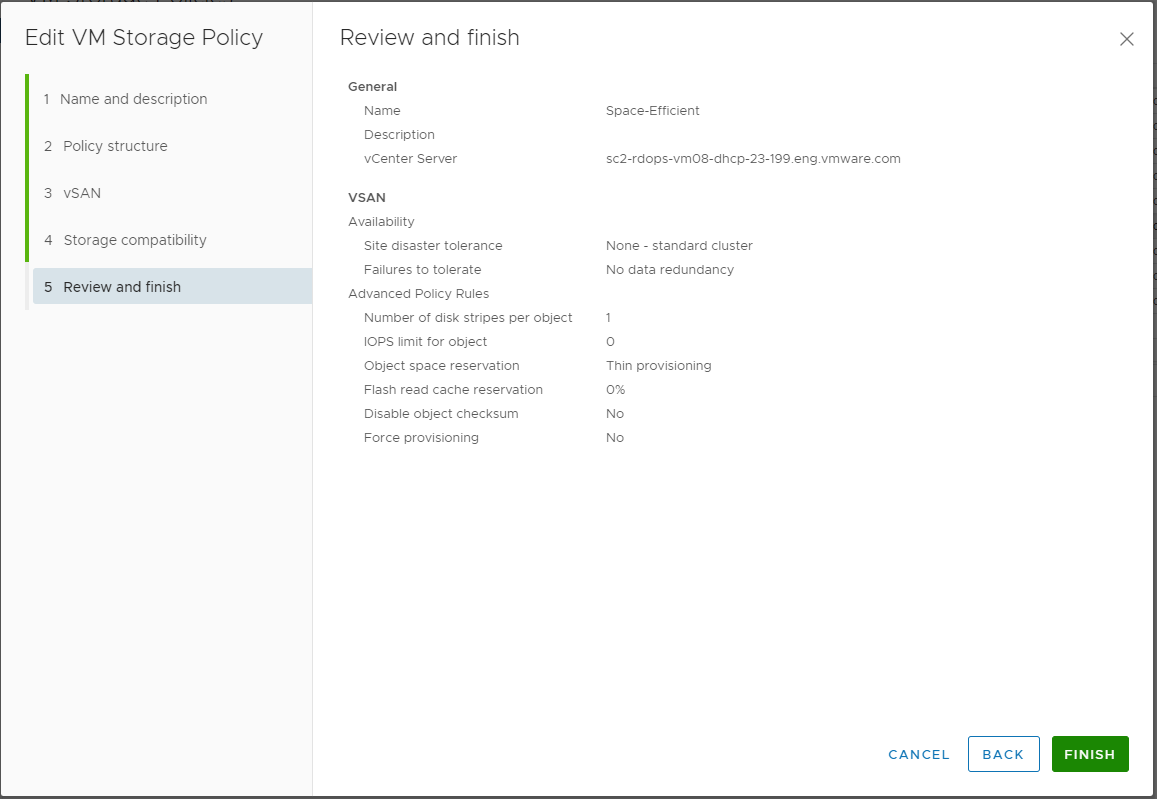The vSphere storage object that will back a Kubernetes containerized application needs to meet specific storage requirements. As a vSphere user, you create a VM storage policy based on the requirements provided to you by the Kubernetes user.
If you have multiple vCenter Server instances in your environment, create the VM storage policy on each instance. Use the same policy name across all instances.
Prerequisites
- The Kubernetes user identifies the Kubernetes cluster where the stateful containerized application will be deployed.
- The Kubernetes user collects storage requirements for the containerized application and communicates them to the vSphere user.
- Required privileges: and .
Procedure
What to do next
You can now inform the Kubernetes user of the storage policy name. The VM storage policy you created will be used as a part of storage class definition for dynamic volume provisioning.
